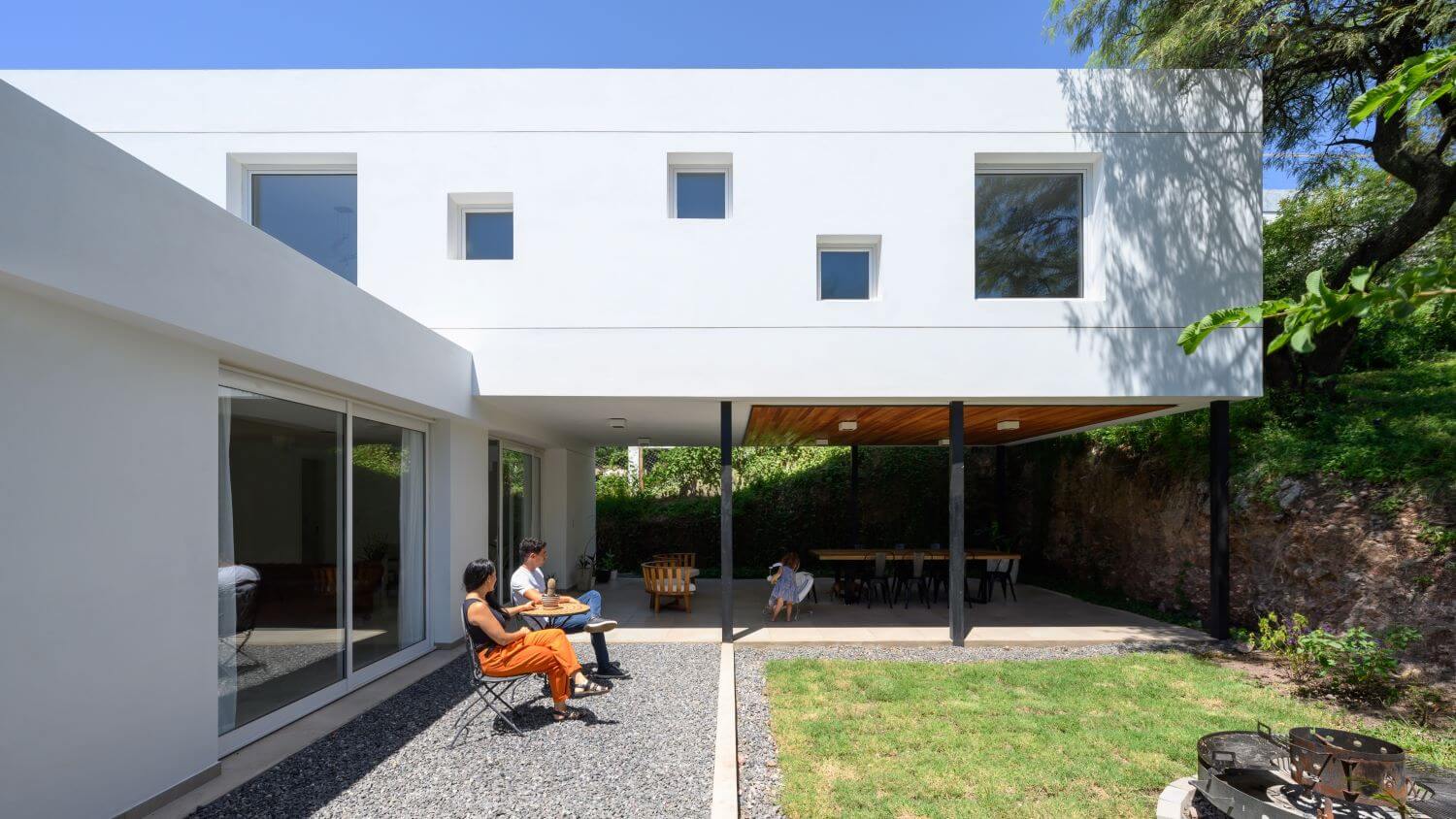#17630. Minimalist white facade with floating upper volume and contrasting architectural details

This architectural object is a striking example of contemporary minimalist design with a characteristic white facade that has become a signature feature of modernist architecture. The building's facade features clean, geometric lines and asymmetrically placed window openings of various sizes, creating an interesting compositional play on the white surface of the walls.
Particular attention is drawn to the upper volume of the building, which seems to float above the lower level thanks to its cantilevered construction. This technique creates a covered terrace with a wooden ceiling supported by thin black columns, forming an expressive contrast with the snow-white walls. Such a solution not only visually lightens the massiveness of the building but also provides a functional shaded space for relaxation.
The facade design employs the principle of "honest materials," where white plaster serves as the main element, while glass, metal, and wood act as complementary accents. The laconic exterior is compensated by carefully considered interaction with the environment: large sliding doors connect the interior space with the garden, blurring the boundary between home and nature.
When designing your own facade in a similar style, it's worth paying attention to the contrast of materials, playing with the geometry of window openings, and carefully considering the integration of architecture into the landscape. The important elements are not decorative details, but proportions, light, and shadow, creating an expressive appearance at any time of day.